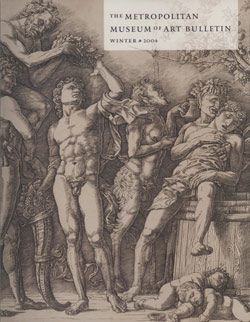The Fall of the Giants
Salvator Rosa Italian
Not on view
According to classical mythology, after the Golden Age came the Silver Age and then declined through the Bronze Age to the wicked Age of Iron. At the end of the Iron Age, brother fought against brother. As Ovid writes in the beginning of his Metamorphoses 'Justice fled from the bloody earth ... Heaven was no safer. Giants attacked the very throne of Heaven, piled Pelion on Ossa, mountain on mountain, up to the very stars. Jove struck them down with thunderbolts.'
Salvator Rosa was inspired by Giulio Romano's famous fresco of the Fall of the Giants in the Palazzo del Te in Mantua when he created this unusually large print. There are more than a dozen surviving preparatory drawings for the etching, indicating the effort that Rosa put into its production. Although Rosa signed the work 'Salvator Rosa Inv. pinx', the etching is not derived from a painting. In a letter to his friend Ricciardi, Rosa lamented that 'even a fantasia like the Giants hasn't been sufficient to create the desire in anyone to see it painted.' Obtaining few of the painting commissions that he coveted, Rosa used etching to explore the grand philosophical and mythological themes that fascinated him, yet was disappointed that prospective patrons who saw this dramatic episode in print did not request a painting of the subject.
The inscription attached to Rosa's dedication, 'he is raised aloft that he may be hurled down in more headlong ruin,' is from The First Book Against Rufinus by Claudian Claudianus, often called the last poet of classical Rome. This quotation links the downfall of the presumptuous Giants to the fate of the cruel and greedy tyrant Rufinus, whose reign was also portrayed as the end of a Golden Age.
Due to rights restrictions, this image cannot be enlarged, viewed at full screen, or downloaded.



